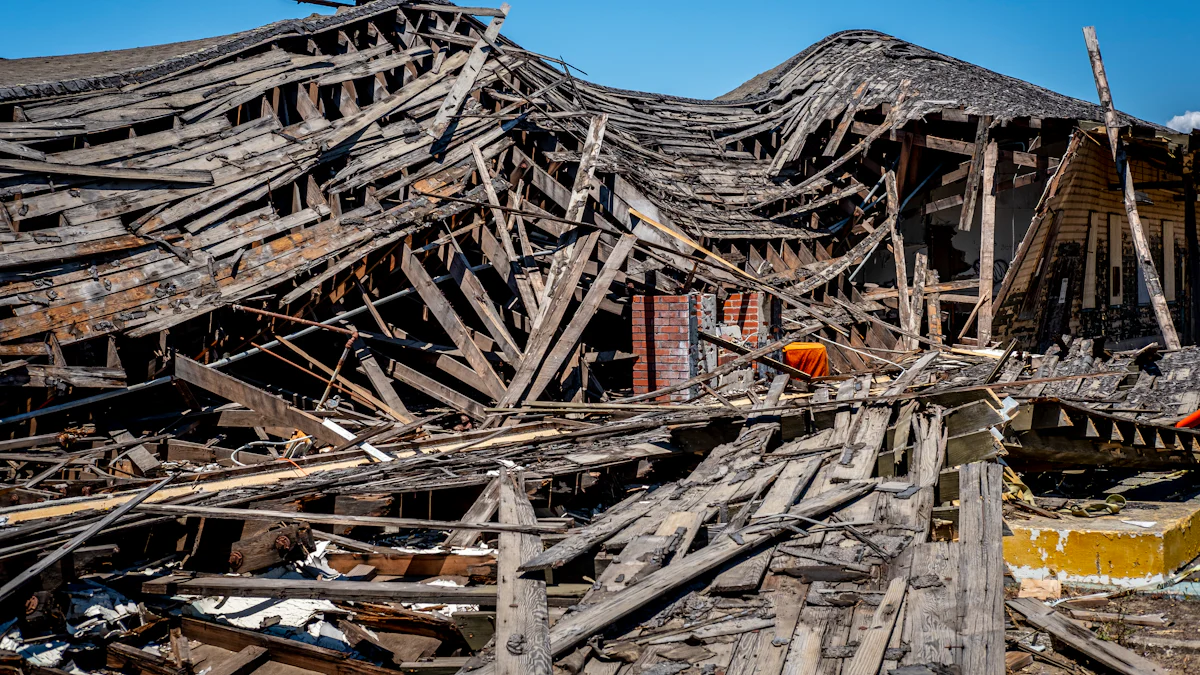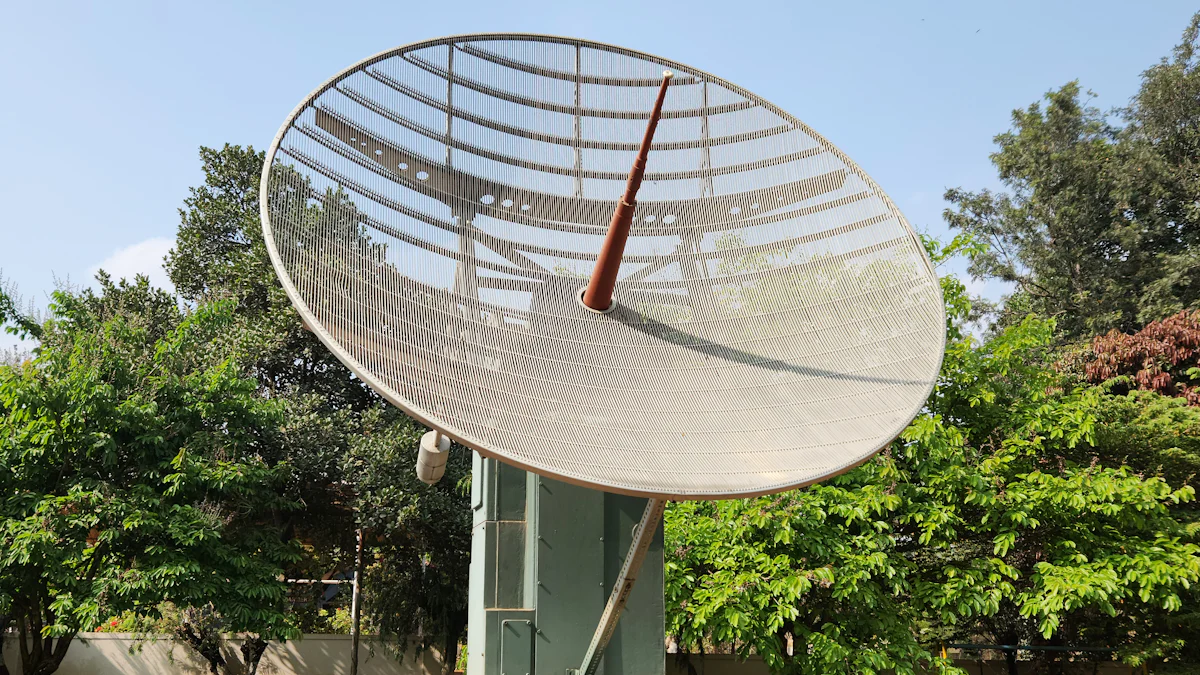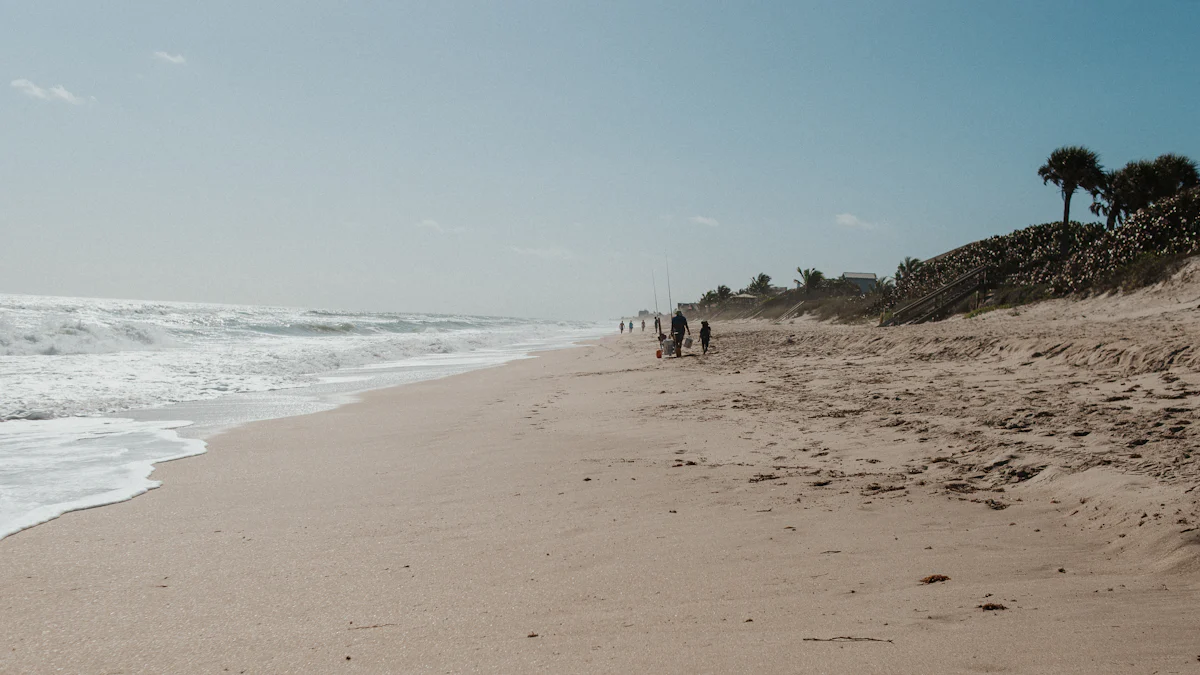hurricane depression in Florida

You may wonder why Florida often finds itself in the path of hurricanes and tropical depressions. These powerful storms, known for their destructive potential, frequently target this region. Florida's unique geographic location makes it particularly vulnerable. The state has experienced multiple hurricanes in a single season, such as Charley, Frances, Ivan, and Jeanne. Despite common misconceptions, no part of Florida is immune to these storms. Understanding this vulnerability can inspire you to stay informed and prepared, ensuring safety and resilience in the face of hurricane depression.
Understanding Hurricanes and Tropical Depressions
Definitions and Differences
What is a Tropical Depression?
You might wonder what exactly a tropical depression is. It represents the initial stage of a tropical cyclone. In this phase, the system exhibits organized thunderstorms and a defined circulation. However, its wind speeds remain below 39 mph. This stage often serves as a precursor to more intense storms, such as hurricanes. Recognizing a tropical depression early can help you prepare for potential escalation.
How Tropical Depressions Develop into Hurricanes
The transformation from a tropical depression to a hurricane involves several factors. Scientific Research Findings highlight that high sea surface temperatures, mid-level moisture, and low vertical wind shear play crucial roles. These conditions allow the storm to gather strength and intensity. African Easterly Waves often contribute to the origin of these intense hurricanes. As the tropics expand poleward due to climate change, you may notice an increase in the frequency and intensity of these storms. Understanding these dynamics empowers you to anticipate and respond effectively to hurricane depression.
The Atlantic Hurricane Season
Timing and Duration
The Atlantic Hurricane Season spans from June 1 to November 30. During this period, you should stay vigilant, as the likelihood of encountering a hurricane depression increases. This season's timing aligns with the warmest months, providing the necessary conditions for storm development. By staying informed about the season's progression, you can better prepare for any potential threats.
Historical Impact on Florida
Florida has faced numerous challenges from hurricane depression throughout history. The state has experienced significant damage and disruption from past storms. For instance, hurricanes like Charley and Ivan have left lasting impacts on communities. These historical events serve as reminders of the importance of preparedness. By learning from the past, you can take proactive steps to protect yourself and your loved ones during the hurricane season.
Current Situation and Monitoring

Invest 94L
Current Monitoring Efforts
You might have heard about Invest 94L, a system currently under close observation by meteorologists. This area of low pressure, located over the central tropical Atlantic, has been producing disorganized showers and thunderstorms. The National Hurricane Center (NHC) describes it as a "well-defined area of low pressure." Despite its current state, experts remain vigilant. They track its movements and monitor changes in atmospheric conditions. This vigilance ensures that any potential development into a hurricane depression is detected early, allowing you to stay informed and prepared.
Potential Development into a Tropical Depression
Invest 94L remains in a dry-air environment, which limits its immediate development. However, as it moves westward, conditions may become more favorable. The system could potentially develop into a tropical depression as it approaches the Leeward Islands and enters the Caribbean Sea. This possibility highlights the importance of staying updated on weather forecasts. By keeping an eye on such developments, you can take necessary precautions and ensure your safety during the hurricane depression season.
Importance of Monitoring Systems
Role of Technology in Tracking Storms
Technology plays a crucial role in tracking storms like Invest 94L. Advanced satellite imagery and computer models provide real-time data, helping meteorologists predict storm paths and intensities. This information is vital for issuing timely warnings and preparing communities for potential impacts. By understanding how technology aids in monitoring hurricane depression, you can appreciate the efforts made to keep you safe.
Early Warning Systems
Early warning systems are essential in mitigating the effects of hurricane depression. These systems alert you to impending storms, giving you time to secure your home and gather necessary supplies. They rely on accurate data and efficient communication channels to reach you promptly. By paying attention to these warnings, you can protect yourself and your loved ones from the dangers posed by tropical depressions and hurricanes.
Florida's Vulnerability to Hurricanes

Geographic and Climatic Factors
Location and Climate
Florida's unique location makes it a prime target for hurricanes and tropical depressions. You find the state nestled between the Atlantic Ocean and the Gulf of Mexico, which exposes it to storms from both sides. The warm waters surrounding Florida provide the perfect breeding ground for these storms. As a result, you often see hurricanes gaining strength as they approach the coastline. This geographic positioning, combined with a subtropical climate, means that Florida experiences frequent and intense hurricane activity.
Historical Data on Hurricane Impact
History shows that Florida has faced numerous challenges due to hurricane depression. You can look back at past events to understand the state's vulnerability. For instance, Hurricane Michael left a significant mark on Florida communities. Over 100,000 households felt the impact, with many homes left vacant. Such historical data highlights the importance of preparedness and resilience. By learning from these past events, you can better equip yourself to handle future storms.
Recent Examples of Impact
Case Study: Recent Tropical Depressions
Recent tropical depressions have demonstrated their potential to disrupt daily life in Florida. You might recall the rapid intensification of storms like Milton, which followed closely after Hurricane Helene. Although Milton's losses were smaller, the compounded effects of consecutive storms posed significant challenges. These examples underscore the need for vigilance and readiness during the hurricane season. By staying informed, you can minimize the impact of these storms on your life.
Case Study: Recent Hurricanes
Hurricanes have left a lasting impact on Florida's landscape and communities. You can see the aftermath of storms like Hurricane Michael, which caused widespread damage and increased residential vacancies. These hurricanes serve as powerful reminders of nature's force. They also highlight the resilience of Florida's communities. By understanding these case studies, you can draw inspiration from the strength and determination shown by those who have weathered the storm. This knowledge empowers you to face future hurricane depressions with confidence and preparedness.
Factors Influencing Development and Impact
Meteorological Factors
Wind Shear
Wind shear plays a crucial role in the development of hurricanes. It refers to the change in wind speed and direction with height in the atmosphere. When wind shear is low, it allows storms to grow vertically and strengthen. You might think of it as a supportive environment for storm development. However, high wind shear can disrupt the structure of a storm, preventing it from intensifying. By understanding wind shear, you can appreciate how meteorologists predict the potential growth of tropical depressions into hurricanes.
Sea Surface Temperatures
Sea surface temperatures significantly influence hurricane formation. Warmer waters provide the energy needed for storms to intensify. Scientific Research Findings indicate that high sea surface temperatures lead to stronger winds and more intense hurricanes. For example, the warm tropical North Atlantic Ocean has contributed to the increased intensity of recent storms. As you learn about these factors, you can better grasp why some storms become more powerful than others. This knowledge empowers you to anticipate the potential impact of hurricanes.
Human and Environmental Factors
Urban Development
Urban development can exacerbate the effects of hurricanes. As cities expand, they often replace natural landscapes with concrete and asphalt. This change can increase runoff and flooding during storms. You might notice that areas with dense development experience more significant damage. By considering the impact of urbanization, you can understand the importance of sustainable planning. This awareness encourages communities to adopt practices that reduce vulnerability to hurricanes.
Environmental Changes
Environmental changes, such as climate change, also affect hurricane activity. Scientific Research Findings show that climate change has amplified hurricane rainfall percentages. For instance, Hurricane Ian in 2022 saw an 18% increase in rainfall due to climate change. These changes highlight the interconnectedness of our environment and weather patterns. By recognizing the role of environmental changes, you can appreciate the need for global efforts to mitigate climate change. This understanding inspires you to take action and support initiatives that protect our planet.
Staying informed about hurricane depression in Florida is crucial for your safety and resilience. You should:
Stay Updated: Regularly check weather forecasts and alerts. Knowledge empowers you to make timely decisions.
Prepare Ahead: As Chauncia Willis wisely advises, "Don't wait until the skies are gray. Think about what to do to survive right now." Stock up on essentials and secure your home.
Utilize Resources: Leverage technology and community resources. Early warning systems and local emergency services are there to help you.
By taking these steps, you can face hurricane season with confidence and preparedness.
See Also
Strategies for Beating Late-Summer Blues
Best Ways to Enjoy Labor Day Travel Stress-Free
The Power of Meditation in Relieving Stress and Sadness

